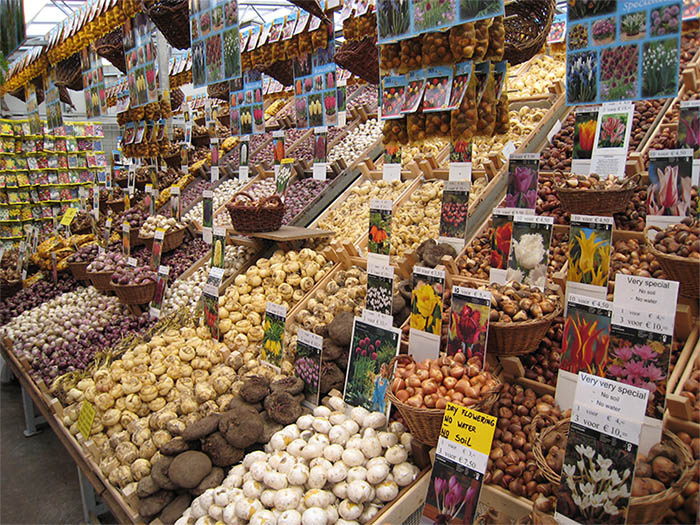Not long ago, I was strolling around San Francisco, looking for an economical fast-food place so that I could have a quick lunch. As I made my way through the streets, I noticed an enormous chalkboard beckoning me to a restaurant. This chalkboard pulled attention from everyone who walked by, as it was loaded with over 50 variations of sandwich. Stepping inside as if in a trance, I leisurely read through the menu, reading all of the different combinations available, and found that it was a lot of fun..
There was a slight problem, however – I just couldn’t pick one.
Overwhelmed by the near-endless selection, I quickly departed the restaurant without making any purchases. It might seem trivial to some, but my mind was plagued by thoughts – what if I picked the wrong one? What if I didn’t like it? What if I ordered and then see something I’d like better?
As a graduate student at Stanford University, Sheena Iyengar, who is now a professor at Columbia University and a leading expert on the theory of choice, noticed something similar to my predicament. She loved frequenting an upscale grocer that was like “going to an amusement park.” The store carried over 250 options for mustards and vinegars, two dozen brands of bottled water, 75 different kinds of olive oils…and that was all within the first ten feet of walking through the door. Despite the fact that going to the store was a favored pastime, she never seemed to actually pickup anything up when she visited.
One day, she decided to conduct an experiment where she set up a table outside of the store and offered samples of some jam. The first Saturday, she presented 24 different jam samples to customers. The next Saturday, she offered just six options.
So, how many people stopped by the table?
On the Saturday that she offered 24 flavors, 60% more people stopped by the table than on the Saturday that she offered fewer.
These numbers indicate that customers prefer having more choices when making purchases. However, there is a far more important question: which group purchased more jam? As it turns out, we see the opposite when it comes to purchasing.
Only 3% of those customers who sampled the 24 jams actually bought jam. On the other hand, 30% who sampled from the six flavors bought a jar. They were at least 6x more likely to make a purchase when they had fewer options.
Psychologist Barry Schwartz, who wrote the book The Paradox of Choice, believes that the reason people prefer fewer choices comes down to our emotions. He suggests that when we are faced with more selections, we are likely to feel indecisive, regretful, and generally less satisfied than we would be if we had fewer options. “Overload” is the word that he uses to explain the particular emotion that we feel – and many studies have confirmed that is exactly what happens. While we are shopping, while we watch television, and even while we listen to the radio, we are faced with a plethora of different advertisements. So why do many companies think that the more choices we have, the better? Well, blame that on tradition!
In 2014, the iconic California burger chain In-N-Out was selected as America’s favorite “fast-food” restaurant for the third consecutive year according to the Consumer Picks survey by Nation’s Restaurant News. Their menu is somewhat scant, limited to burgers, French fries, soft drinks, and milk shakes. McDonald’s, on the other hand, which is notorious for a constant stream of new items that they later discontinue after poor sales, ranked 110 out of 111. Take a good look at the two menus below. See any difference?


The overabundance of choices can disengage potential customers. Not only does simplicity attract new customers, it also brings them (and their friends) back and causes brand loyalty. We call this staying “sticky.”
According to a study by Patrick Spenner and Karen Freeman that was published in the Harvard Business Review, the single biggest driver of stickiness was “decision simplicity.” When buying something is simple, it encourages consumers to purchase it, repurchase it, and even recommend it to their friends.
Jumping into the small business arena, have you asked yourself these two simple questions?
- How simple is it for consumers to gather and understand (or navigate) information about your brand?
- Is your webpage, marketing campaign, email, or advertisement going to reduce the consumer’s cognitive overload in any way or increase it? In other words, is it ridiculously simple to understand your services/product?
If the answers are “very simple” and “yes,” you are on the right track! It is likely that what you’ve created will resonate with your consumer and allow for positive experiences that will translate to customer retention and recommendation.
If the answers are not “very simple” and “yes” however, go back to the drawing board until they are. It is fundamental and key for your customers to instantly understand what you are offering to them.
Remember that as a rule of thumb, the simpler the interaction, the more likely they are to buy and continue to buy again.. Just keep it simple!
As always, we’d like to hear from you. Do you have a keep it simple quandary that Kolau can help with? Ask us on Twitter at @kolaumarketing, or via email at info@kolau.com and you may see yourself on the blog’s section Ask Dan’s weekly.
—
Kolau is the easiest way to market your small business. Request early access and start owning your small business online presence today. No marketing knowledge needed. No agencies required. Now you know, now you can.
Be sure to subscribe to our blog for the latest news in business marketing!






















